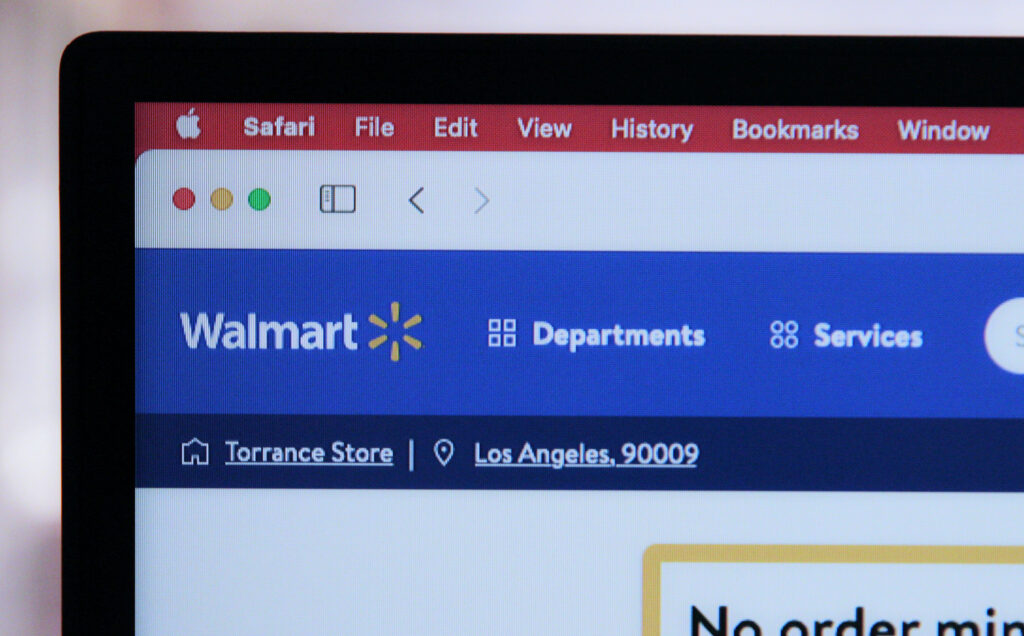
In 2019, Walmart was the highest-grossing retailer, making more than twice what its closest competitor, Amazon, earned in retail sales. Amazon may have defined the last decade of retail, but Walmart has comfortably maintained its dominance in this new environment of omnichannel selling and tech-based solutions. By harnessing its substantial physical footprint, continuously experimenting with new innovations, and partnering with external companies to develop its services, this retail giant hasn’t just stayed ahead of the curve in this volatile climate; it is setting the curve for its competitors.
It took quite a few years for Walmart to figure out its eCommerce strategy, but once the company started honing in on its strengths, the company’s online retail business ballooned. During its second quarter, Walmart’s eCommerce sales grew by 97%. The pandemic certainly contributed to that growth, but the company’s efforts to transform its already mammoth-like supply chain into an omni-channel organization undoubtedly had an impact as well. With more and more consumers turning to online shopping, the decision to integrate digital and store supply chain operations last could not have been more well-timed. Although inventory fell during the first and second quarters by 8 and 5% respectively, Walmart’s supply chain has remained comparatively healthy in the current climate and continues to stabilize.
Brick and Mortar
Those gains would’ve been possible without Walmart’s brick-and-mortar footprint. Walmart has 5,355 physical locations spread out across the United States so that 90% of shoppers live within a 5-mile radius of one of its stores. That proximity not only allows them to reach consumers who might not have as much access to other retailers, but it also allows Walmart to cut costs on the most expensive, most inefficient, and final step in the eCommerce supply chain: last-mile delivery. By using its stores as distribution centers, Walmart is able to deliver a customer’s order in less than two hours. “In this race for speed and convenience, having a footprint that acts as a store and a distribution center is game-changing,” said Kantar Consulting’s SVP Lei Duran. Providing loyal grocery shoppers with the opportunity to get all of their shopping done in one fell swoop puts them at an advantage in the growing competition of the grocery delivery space.
Innovation
These past few quarters have proven that Walmart’s propensity for innovation and experimentation sets the company up for success in the long run. Those experiments provide invaluable data and learnings that equip them to better serve customers in its physical stores. “Walmart is constantly testing innovations and improvements in efficiencies in small subsegments of stores,” said Duran. “Because they have this engine of test innovation, they’re able to have a lot more learning and to have agility when something changes,” said Duran.
In one particularly interesting experiment, Walmart reworked a few stores to replace all of their cashiers with self-checkout lanes in order to lower costs, reallocate more space to merchandise, change the behaviors of shoppers, and utilize associates in other spaces where they are able to more purposefully interact with customers. What the company found was that most customers prefer efficiency over engagement, especially now that less engagement means more safety. It’s unlikely that 100% self-checkout will expand across Walmart’s footprint any time soon; instead, the service will provide the company with data about how to foster a better shopping experience for their customers.
Walmart+
The new Walmart+ membership program is another great example of how the company treads carefully into new prospects and uses a test-and-learn strategy to prevent costly failures. The benefits are free unlimited delivery, discounts on fuel, and access to Scan & Go, a service that enables customers to scan barcodes on their purchases as they shop so that they can watch their spending and perform an easy self check-out by simply scanning the register’s QR code and paying with the card saved to your app. At the same price of an Amazon Prime subscription, the program doesn’t offer nearly the same range of services, but Walmart intends to expand benefits as it figures out what works and what doesn’t. Again, the company is using the data the membership produces in order to better serve customers. “Learning and data is truly the currency of retail growth,” said Duran. “The more you have, the faster you’ll grow and the more penetration growth you can have in the market.”
Those learnings, technologies, or services don’t always come from in-house. “Walmart has done a really good job of acquiring companies, sometimes not because of the company but because of the knowledge,” said Duran. “Is there someone that’s better to partner with versus growing it from the ground up?” During the first quarter fiscal earnings call, Mcmillon referred to the acquisition of Jet.com and its founder, Marc Lore, “critical” to the company’s massive growth in eCommerce, delivery, and in-store pickup.
At the core of all of these innovations is Walmart’s commitment to simultaneously providing affordably priced goods and premium services. “The strategic importance of providing multiple options for customers has never been clearer,” said CFO Brett Briggs during the Q2 fiscal earnings call. “If the customer is ultimately in charge, we are going to be flexible, and we’re going to have multiple ways to serve them.”
Sign up for a no-obligation demo today and start finding the next retail juggernaut.